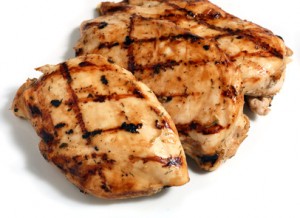 July 4th is here - and the grills are blazing!
July 4th is here - and the grills are blazing!
While celebrating the holiday and enjoying the summertime weather, there are a few simple steps that you can take to make your cookout significantly healthier. And you’ll be one step closer to looking like Zac Efron (see picture at right). Yum.
Here are my suggestions:
- Use whole wheat buns and rolls. We all know that whole wheat bread products have several nutritional advantages over white bread and other refined grains. But did you know that hamburger buns and hot dog rolls are also available in whole wheat varieties? But don’t be fooled; “wheat” isn’t the same as “whole wheat” and multigrain doesn’t necessarily mean healthier. Read the ingredients carefully.
- Opt for chicken or turkey hot dogs. When shopping, compare the nutritional information between traditional hot dogs and chicken or turkey variations. My top pick is Applegate’s Natural Uncured Chicken Hot Dog. They are leaner, healthier - and just as delicious!
- Buy grass-fed beef. Most of us already eat too much red meat. But if burgers are on the menu, select grass-fed ground beef. It tends to be a bit pricier, but grass-fed beef is leaner, has higher levels of omega-3 fatty acids, less dietary cholesterol and increased vitamins. Grass-fed is definitely healthier than the corn-fed beef commonplace in today’s supermarkets.
- Don’t char your meat. When meat becomes charred, it develops carcinogenic compounds called HCAs. These compounds have been shown to increase possible risk of breast, colon, prostate and stomach cancer. In fact, in one study, researchers found that individuals who ate beef medium-well or well-done beef had 3x the stomach cancer risk than individuals who at their beef rare or medium-rare. To reduce charring, cook at lower temperatures, trim off fat to reduce flare-ups, remove charred pieces before consuming and opt for a grill with a flavor bar between the food and flame.
- Eat lots of veggies and fruit. Take advantage of fresh produce by serving an array of vegetable side items. Replace unhealthy sides like potato salad with grilled corn, tomato salad or anything else that’s readily available. When it comes to dessert, replace cookies and pies with fresh fruit. Make fruit kabobs or serve fruit salad. It’ll totally hit that sweet tooth.
If you have any other healthy grilling tips, share them in the comments below! Happy July 4th!







 Which meat is the healthiest? Chicken is the obvious answer - but it’s not always true.
Which meat is the healthiest? Chicken is the obvious answer - but it’s not always true.

